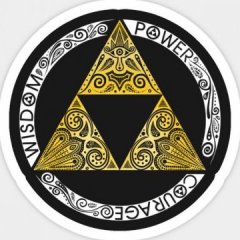-
Posts
599 -
Joined
-
Last visited
Content Type
Profiles
Forums
Blogs
Downloads
Articles
Gallery
Everything posted by SSIMMONS
-
Hey there Tom, I have not used the Fluid CFD (only Ansys fluent), but I have used the standard Static and Dynamic packages fairly extensively. I like them just fine and they have seem to have come a long way in recent years. The answer above seems fairly formal (like an advertisement) and it seems to be the only post for that individual, but despite that it is definitely worth a try. I will say that as far as documentation, there is practically none that I have found. I found a manual once (don't remember where it went), but it was so outdated I just forgot about it. If you are looking for step by step examples, I would not count on it. On the other hand, if you find some please let me know. Hope this helps! -Spencer
-
I never knew that! Thanks!
-
It really just depends how you want it. If they don't all need to be separate parts a bi-linear pattern cross-sectional edit can be used. I believe there is also a fill feature that will fill the outline in automatically to the extents of the part. If you are interested in this I can search around for it, its been a while. -Spencer
-

How to set ironcad to save to an earlier version?
SSIMMONS replied to Hait's topic in General Discussion
Export to .STEP and you can re-import in the older version. All BREP though. This is why when new versions come out I usually use the only one for a month or three until all my work is done and sent and I know the version is stable. There are exceptions to this, but mostly that's what I do. -Spencer -
I will say that the triball symbol over the handle does annoy me from time to time.
-
It looks like it ticks all the boxes mentioned by Cary earlier. Shaded views, Views made from multiple configurations, etc. I am still a bit surprised by how large the file is though.
-
I believe that is just so when you drop a default shape the view fits it and it isn't way too big or way too small. Are you trying to resize an actual block or shape or mess with the default size when you drop it into the scene? Once you answer I will follow up with a video. -Spencer
-
Keep in mind that his comma is in a different place due to the format. The drawings are not 7 Gig, but rather under one gig. They are still very large though.
-
I think it would depend on the size of the model and what type of views you drop so it's hard to tell without an example drawing. -Spencer
-
One easy way is to right click on a part and select "find in scene browser". This will force the tab back open. -Spencer
-
Unfortunately I don't think there is. I really hope I am wrong because this has got me a time or two also. Look forward to other peoples responses! -Spencer
-
All I do is use the 3D text feature and go to edit the cross section, copy it, place a hole block, edit cross section, paste. 2021-08-09 15-51-06.mp4
-
I do not use the stretch command often if ever (I probably should), but from what I do know, the .STEP files import as BREP's and they are limited in functionality. This is most likely one of those limitations. -Spencer
-
I would not add a motion path to the belt. As you have it, it is several separate pieces and when you rotate the segments it only rotates that section, which puts it out of plane. I don't know of a way to make the belt adaptive and actually move, but if it is not moving it will essentially look the same. One of the retaining rings is not centered, but other than that it looks good. Edit: I think your bushings and sheaves are rotating opposite directions also.
-
This may be obvious to everyone, but I just realized you can do this which is very helpful. When I create exploded views that require the endpoint of the 3D line segment to fall in an area that would generally need a node to snap to I now use this method. The video will show what I mean, but you have to click the middle of the triball at the end and then not move the mouse and click again for it to work. Hopefully someone out there finds it helpful. -Spencer 2021-07-23 13-54-50.mp4
-
Wow, it's amazing what escapes me sometimes haha. Thanks!! You may want to also add a distance constraint between the outside faces of the top and bottom plates. If you don't do this, when you use the triball to move it you may pull the parts out of plane. It isn't a must, but it will help. I also had a post a while back about a slightly more detailed setup of a clamp that you can take a look at. https://community.ironcad.com/index.php?/topic/14572-mechanism-mode/&do=findComment&comment=55378
-
Unfortunately I do not think you can adjust the motion distance without creating a new path. One work around to this is to create an additional motion path and set it to begin where the other left off (make sure the time/distance ratio matches the first motion path so they don't display at different speeds). This will compound the first with the second. I really hope someone chimes in with a correction and that you can change the distance after creating the path because this is a HUGE limitation and has created frustrations for me in the past. Good Luck!
-
I may be wrong, but I don't believe the anchor location has anything to do with the symmetric handle (or non-symmetric) adjustments. I do know that this feature seems to work sometimes, not work others, and sometimes it shows correctly and does not actually do what is shown in the drag preview. I tend to manually adjust each side because at least it seems to be consistent where the symmetric adjustment is a little hit or miss, at least on my setup.
-
The lower and upper are a pin and slot constraint. The others are concentric constraints. After you set these up, you can fix the bottom plate and either manually pull it up or set an animation for the top plate to move up by a fixed amount. The constraints will take over at that point and you should be good to go. Let me know if you need a more detailed example and I can see what I can do. - Spencer One more thing worth mentioning is that you can hide the constrain symbols by unchecking the box in the snip below: 2021-07-21 09-42-43.mp4
-
Super informative as always Malcolm, Thanks!
-
I would probably copy the part and use a Boolean subtraction operation (or hole block, or trim) to create two halves that make the whole. After that add some alignment pegs and holes and you should be good to go, unless I am misunderstanding your question. As far as core part, use a Boolean operation for that also. You can do a rough block that goes slightly beyond the extents of the cavity and then subtract the mold from the solid.
-
This is what I typically do. I will choose a black or dark color and make it about 40 percent transparent. I prefer doing it this way because hiding a part real quick is easy and so is unhiding it, but you also can select the object.
-
Anytime you need to do something like this and the cross section is not oriented with the screen, you can use a hole block on that part and edit the cross-section of the hole block itself. I will attach a video showing the process of cross-section edits of hole blocks, but it is essentially the same as any other. The notable difference being you are removing instead of adding material. Use projections and you can match the other profile exactly. Just be careful because since your parts are not perfectly aligned due to the dill piece being a trapezoid, the projection can be relative to a different plane sometimes and not do what you expect, but you will work this out naturally in time. Good Luck! -Spencer 2021-07-02 09-14-56.mp4
-
I am not sure exactly what you are trying to do in the other plane, but maybe this will help. I also modeled the piece in two different ways just so you have options, There are many many ways to do this, but it really just comes down to personal preference and workflow setup. I have 12 keys on my mouse so I hardly use a keyboard for the most part (really only when I input numbers, though the mouse can do that also) and this creates an extremely rapid modeling setup, but I will say it takes a toll on the old wrist. When it shows the number keys being pressed in my videos, it is actually just a mouse. - Spencer 2021-06-30 09-10-53.mp4 2021-06-30 09-16-14.mp4
-
In my personal opinion, this is more or a manufacturing limitation question. In a lot of circumstances you would fill the gap with weld so the way you have it would be fine because the stock, sheet, etc. being used will have a square face and it is often not worth paying for special machining of the part to fit flush like you are saying. I think most people approach these in different ways depending on the type of manufacturing they are used to and the limitations they have to live with. Now, that being said, you can either break it back to flush right before the right side seen above in your snip or you can add material and slice it off with a hole block to make it pretty and clean looking. The easiest would be to modify the cross-section of the block you have on the right side that is bridging the two halves. Just depends what you are doing with it really. Very vague and back and forth answer, but just my 2 cents worth. - Spencer 2021-06-29 16-02-25.mp4





